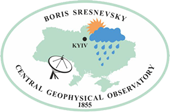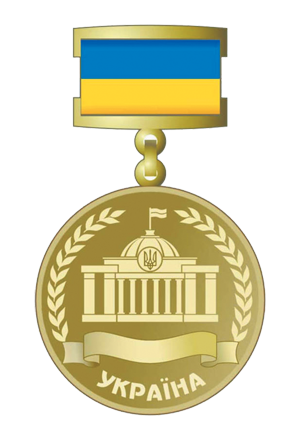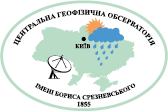M Fastiv
 9, Kiltseva St., Fastiv, Fastiv district, 08500, tel. (04565) 6 40 33
9, Kiltseva St., Fastiv, Fastiv district, 08500, tel. (04565) 6 40 33
| Facebook page of the station: facebook.com/msfastiv |
On the southeastern outskirts of the city of Fastiv, at 9 Kiltseva Street, there is the Fastiv meteorological station, which celebrated its 90th anniversary on May 5, 2018.
The station was organized by the Southwestern Railway Administration under the name "Wind and rain gauge station Fastiv-Vokzal". On 21.11.1928, by the Order of the Ukrainian Hydrometeorological Service, Fastiv-Vokzal station was included in the state register of the UMGS. Until 1930, the station was under the jurisdiction of the Road Service, and the work was carried out by part-time railway telegraph operators. In 1928, the station had only a weather vane and a precipitation gauge and was staffed by 1 employee. In 1930, the station was transferred to the jurisdiction of the Hydrometeorological Service. Until 1947, the station's office and meteorological site were located next to the building of the office of the track service distance, and the apartment of the first station chief Andreev was also there, at which time 5 observers already worked at the station. 
At the beginning of the war in 1941, the station continued its work and stopped it only in connection with the approach of hostilities 2 days before the occupation of Fastiv by the Germans on 20.07.1941. During the occupation, the station resumed its work on 13.08.41 and conducted only climatic observations. In connection with military operations during the passage of the front, the station again stopped its work on 06.11.43, resuming it only after the liberation of Fastiv. Observations were made using portable instruments 9 km from the city on the Vyshniaky farm near the Sorochy Brid railway station. On January 1, 1944, the station resumed its work at the old location with stationary instruments. However, observations were carried out in dangerous conditions due to frequent raids by German aircraft. On April 9, 1944, at night at 2:30 a.m., as a result of a massive raid and bombing of the railway junction, the meteorological office and the meteorological site were completely destroyed, so observations were resumed using portable instruments.
On April 25, 1944, the station was resumed using stationary instruments in the city center, 0.6 km from the previous location. A new meteorological site was arranged, and the office was rented from the homeowner Barymsky at 16 Radyanska Street. However, on July 20, 1946, in peacetime, by order of the local authorities, the meteorological site was destroyed for the construction of the stadium, and observations were again carried out using portable devices for some time.
Since October 1, 1946, the meteorological site has been located at its current location on Kiltseva Street, and the office was originally located in a room of a 2-storey building next to the current building of the station. Only in 1959, under the leadership of Stepan Dutkivsky, the current station building and landscaping were built. S.Y. Dutkivskyi, who worked as the head of the Fastiv weather station for 36 years from September 1941 to September 1977, can rightfully be called the founder of the current station.
Since 1977, the head of the station has been L.I. Parkhomenko, thanks to her efforts in 1986 an extension was made to the station's premises, where a new meteorological office, a boiler room, water and gas were equipped.
The station has 6 employees: 5 meteorological technicians and a manager. The station carries out meteorological, radiometric and environmental pollution observations, and provides data to various sectors of the national economy. Meteorologists observe air temperature and humidity, soil and snow temperature, cloud shape, number and height, wind speed and direction, atmospheric pressure, precipitation, and atmospheric phenomena 8 times a day, record them in books, code them, and submit the information to the Ukrainian Hydrometeorological Center.
Since November 2020, observations of air temperature and humidity, soil temperature and at depths of 5, 10, 15 and 20 cm in the bare area have been carried out using electronic sensors.
The station employs experienced meteorological technicians who have mastered working with new instruments (BAR, MARK-60), electronic sensors, and computer operation. They transmit synoptic information via modem, record meteorological data on technical media, and carry out technical control under the SGEL program.
The station provides information to the district's economic organizations and warns of dangerous and natural phenomena.







